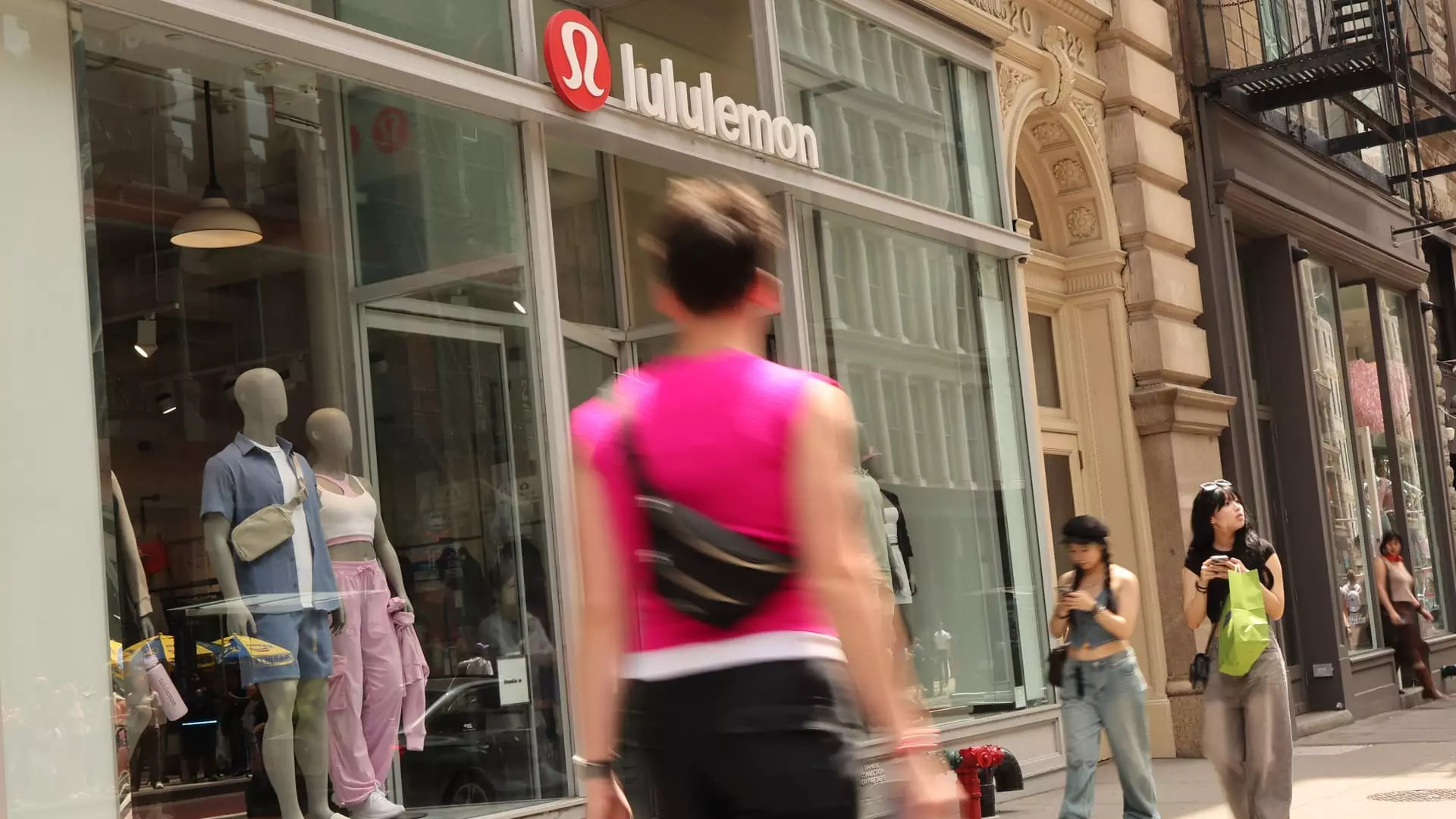Lululemon Athletica has recently found itself at the crossroads of optimism and despair. Despite beating Wall Street’s earnings estimates for the first quarter, the company took the drastic step of slashing its full-year earnings guidance, attributing this change to a “dynamic macroenvironment.” One cannot deny the extraordinary performance figures for the latest quarter, notably with earnings per share hitting $2.60 and revenues climbing to $2.37 billion. However, this surplus is countered by a significant adjustment in future expectations, essentially painting a picture of a brand wrestling with an uncertain future.
CEOs can often spin the narrative of their company’s performance to project confidence, yet the cold, hard truth remains: Lululemon’s stock tumbled nearly 20% in after-hours trading, an ominous indication that investors are wary of the road ahead. Only days prior, Lululemon could wear its success proudly as they reported a net income of $314 million, up from $321 million a year prior. However, this growth appears bleak when placed against the harrowing backdrop of tumultuous economic indicators that plague not just Lululemon, but the entire retail sector.
The Tariff Terrors: A Ripple Effect
Lululemon is not alone in this quagmire; it is ensnared in a larger net of economic uncertainty propelled by tariffs and fears of a decelerating economy. The company’s CEO, Calvin McDonald, mentioned a desire to “leverage our strong financial position,” a statement that feels almost tragically ironic in the face of plummeting share values. Other retailers, such as Abercrombie & Fitch and Macy’s, have already felt the brunt of tariff-induced price hikes or have slashed their profit forecasts altogether. The reality is that the ramifications of these policies ripple through retail, affecting not just giants but also smaller brands reliant on reasonable pricing to attract a consumer base.
Gap’s recent projections indicate an anticipated loss of $100 million to $150 million due to these economic pressures. Nike’s vague admissions of price increases further spotlight the wider implications of a tariff regime that clearly does not discriminate between corporate giants and mid-tier players. The athletic wear industry, in particular, is at a tipping point, struggling to cope with external pressures while contending with slowing domestic sales.
A Decline in Comparable Sales
In the latest fiscal report, Lululemon’s comparable sales seared investors with just a 1% year-over-year increase, a far cry from the anticipated 3% growth. While international markets yielded a modest 6% growth, their performance in the Americas saw a disheartening 2% decline. Such stagnation coexists with their projection of only minor revenue growth, indicating that even as the company pushes for sales, many factors hold it back from achieving excellence across its markets.
While gross margins reached 58.3%, outperforming analyst expectations of 57.7%, this single data point cannot mask the broader trends of stagnation and decline. Coupled with a dwindling stock price—about 13% year-to-date—a precarious pattern emerges. Companies are judged not solely by their immediate figures but by the sustainability of their growth and relevance in an ever-evolving consumer landscape.
The Future Looks Bleak
Looking ahead, Lululemon forecasts earnings per share between $14.58 and $14.78 for the full year, revised down from earlier estimates. Converse to Wallace’s perennial optimism, the market has exhibited an evident decline in sentiment. History teaches us that vast expectations accompany roaring success only up to a certain point before reality bites back. The question remains: can Lululemon wield its supposed strong financial position effectively, or is it merely a paper tiger?
While brands that showcase resilience during economic turbulence can rise above their peers, Lululemon’s current trajectory suggests a narrative driven not by triumph but by caution—a struggle to maintain relevance amidst financial headwinds that loom like dark clouds. In a sport where agility is prized, Lululemon seems beset by an unfortunate mix of over-reach and external turbulence, as it attempts to navigate its future in a landscape mired in uncertainty and transformation.


Leave a Reply